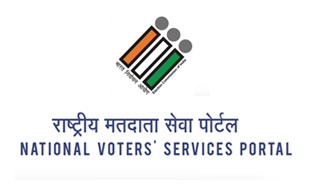FCPC Lab
Ch. Devi Lal State Institute of Engineering & Technology
Fundamental of Computer and Programming in C
A good basic knowledge is a strong foundation for every aspect. FCPC has been included in the course curriculum to provide the basic knowledge of computers in the initial course module for every trade. FCPC lab contains volumes of latest and updated softwares. Here the ‘C’ language programming is practiced so as to inculcate among students a way to interact and understand the way a computer works.
Object Oriented Programming Lab
C++ is one of the most widely used programming languages. Its features (abstraction, encapsulation. Data hiding etc) and flexibility have made it still the leading choice for most of the areas of application, especially in the software development environment. This lab emphasises on the regular curriculum materials as well as some advanced real life applications implemented as practical’s. These practical’s, written in the spirit of learning by doing, are designed to give students a working knowledge of the C++ programming language.

Internet Fundamental Lab
Internet Fundamentals is a course designed to guide you through the Internet and its wide array of useful resources. This course will teach you how to use key Internet technologies, such as Web browsers, e-mail, newsgroups, File Transfer Protocol (FTP), Telnet, and search engines. You will gain experience configuring both Netscape Navigator and Microsoft Internet Explorer to access rich multimedia, including RealPlayer, Shockwave and Flash content. You will use a variety of Web-based search engines to conduct advanced searches, and learn basic electronic commerce and security issues.
Intelligent System Lab
The ability of a computer or other machine to perform those activities that are normally thought to require intelligence. The branch of computer science concerned with the development of machines having this ability.
Ability of a machine to perform tasks thought to require human intelligence. Typical applications include game playing, language translation, expert systems, and robotics. Although pseudo-intelligent machinery dates back to antiquity, the first glimmerings of true intelligence awaited the development of digital computers in the 1940s. AI, or at least the semblance of intelligence, has developed in parallel with computer processing power, which appears to be the main limiting factor. Early AI projects, such as playing chess and solving mathematical problems, are now seen as trivial compared to visual pattern recognition, complex decision making, and the use of natural language.
Data Structure & Advanced Data Structure Lab
This lab serves as a guide for learning and implementing the data structure in a programming language. It basically deals with memory management and various other operations on data with algorithm analysis and design. It helps to implement new algorithm or modify the existing ones according to the requirement. The Lab is well equipped with all advanced software’s for practical applications. The aim of the course is to teach students abstract data types and dynamic data structures. Students use different type of data structures to model real world aggregations of data
Multimedia Technologies
In the past two decades, multimedia technology influences many aspects of our daily life. Besides biotechnology and nanotechnology, multimedia technology has been considered one of the three most promising industries of the twenty-first century. Multimedia research covers a broad scope of techniques and rich applications, including those working on music, video, image, text, and 3-D animation. In the upcoming few years, we would continue to devote our research efforts in advancing the key fields in multimedia, including multi-perspective computer vision, compressive sensing/ sparse representation, video forensics, etc. In what follows, we shall describe in details some key fields.
Web Designing Lab
Web Designing Lab helps you and your business take a step further with the exposure you need to the web of globalization. We not only design and develop the web application, we also provide a consistent technical support for your business to run smoothly and grow gradually.
Website Development includes both designing (front end user interface) and code development (backend) including database management and dynamic functionality of website as per the user actions. Although we work with various tools/languages to achieve this functionality such as – ASP.NET, PHP, JSP but we primarily focus on .NET.
Operating System Lab
OS Operating systems provide the basic functionality on every computer that allows any type of application software to be run. For computer science students it is crucial to know and understand the principal concepts and mechanisms of operating systems. This understanding helps them to efficiently use programming languages to develop software built on top of the operating system. This also applies to people working in other fields related to information technology, who could benefit greatly from a deeper knowledge of operating system internals.
Computer graphics Lab
This lab provides students a found understanding of basic concepts of computer graphics and the need of developing graphic applications. Progress in this field is attained by interactivity, realism, and flexibility. The Computer Graphics Lab focuses on research in curve and surface design, rendering, perception, and user interfaces. In this lab student understand and learn the need of developing graphic applications, concept of color generation, representation and transformation of graphical images and pictures and algorithmic development of graphic primitives.
Java Programming Lab
The Java Programming Language is a general-purpose, concurrent, strongly typed, class-based object-oriented language. The aim of this lab is to help students learn Java Programming step by step. It is compiled to the bytecode (platform independent code) instruction set and binary format defined in the Java Virtual Machine Specification. The latest Java Development Kit (JDK) has been installed with all the new features that support advanced programming. JAVA has always been the best choice for most of the mobile applications
Compiler Design Lab
A compiler translates (or compiles) a program written in a high-level programming language that is suitable for human programmers into the low-level machine language that is required by computers. During this process, the compiler will also attempt to spot and report obvious programmer mistakes.
Using a high-level language for programming has a large impact on how fast programs can be developed.
Cloud computing lab
Cloud Computing is the emerging buzzword in cyberspace. It is rising day by day due to its rich and well-to-do features of services. Cloud computing refers to applications and services that run on distributed networks using virtualized resources and accessed by common internet protocols and networking standards. Cloud computing is a new flavor of computing where our trend of using Internet changes. The term “cloud” is analogical to “Internet”. The term “cloud computing” is used for the computation over the Internet. It is the future of Internet. It is also called as fifth generation of computing after Mainframe, Personal Computer, ClientServer Computing, and the Web. Currently various Internet services are available in distributed manner. There are three well-known technologies associated with Cloud Computing, specifically Software-as-a-Service (SaaS), Platform-as-a-Service (PaaS) and Infrastructure-as-a-Service
Python Lab
Python is an interpreted, object-oriented programming language similar to PERL, that has gained popularity because of its clear syntax and readability. Python is said to be relatively easy to learn and portable, meaning its statements can be interpreted in a number of operating systems, including UNIX-based systems, Mac OS, MS-DOS, OS/2, and various versions of Microsoft Windows 98. Python was created by Guido van Rossum, a former resident of the Netherlands, whose favorite comedy group at the time was Monty Python’s Flying Circus. The source code is freely available and open for modification and reuse. Python has a significant number of users.
Android Lab
COURSE OBJECTIVE
The objective of this practical is to put concepts of Computer Networks and Operating Systems into practice, in the context of Android smartphones.
It consists of low-level programming assignments on Android smartphones,requiring the thorough understanding of operating systems and network concepts.
COURSE CONTENT
This practical consists of two parts. The first is to build a TCP implementation for Android smartphones. The second is to develop a Chat application over the TCP stack of the first part. Both parts are to be written in Java using the Android operating system.





